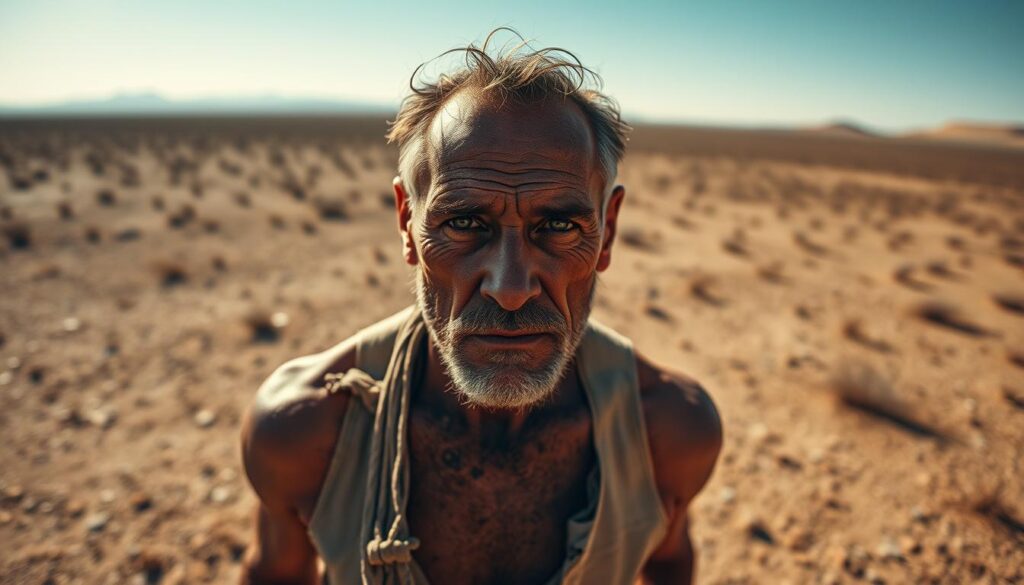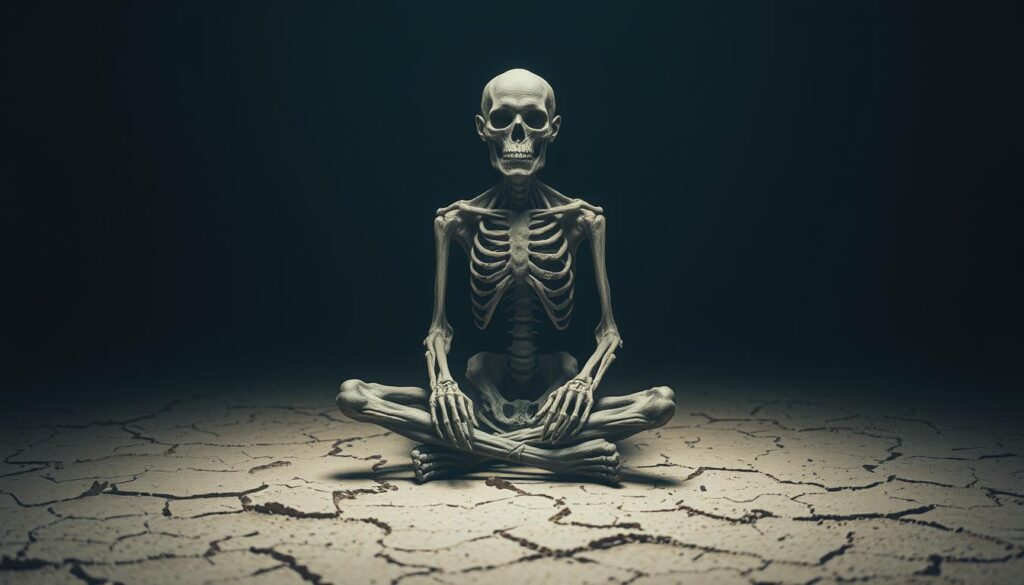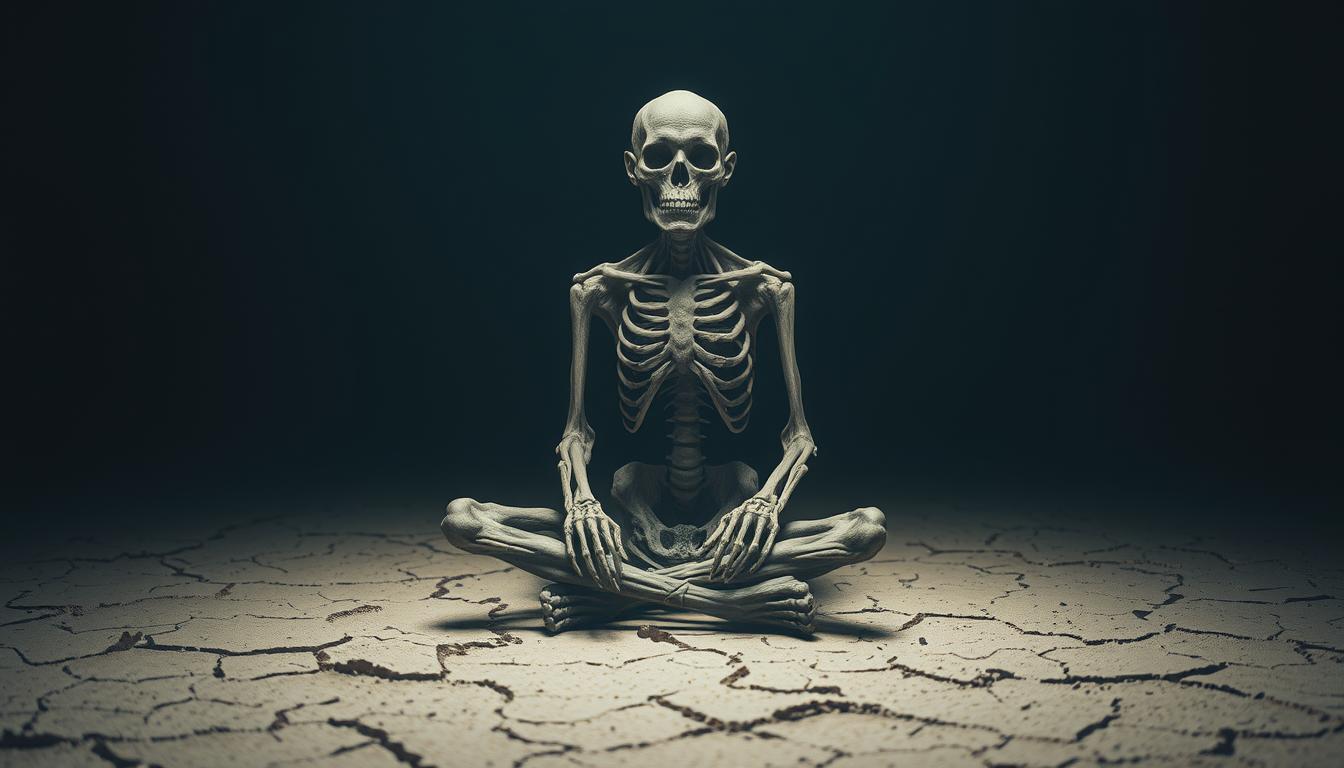Survives Without Food or Water – A remarkable case of human endurance has stunned the medical community. Prahlad Jani, an 83-year-old Indian holy man, claims to have lived for decades without consuming food or water. Medical professionals at Sterling Hospital in Ahmedabad kept him under strict observation for two weeks in 2010.
They reported no intake of nutrition, no passing of urine or stool, yet he maintained surprising vitality throughout the monitoring period.

The human body typically cannot last more than three days without water or three weeks without food. This extreme survival case challenges our fundamental understanding of human physiology. Doctors documented stable vital signs despite the complete absence of sustenance.
This has ignited debates about unknown mechanisms that might allow for such extraordinary endurance limits.
While skeptics question the validity of such claims, the careful monitoring protocols implemented during observation periods have left many scientists scratching their heads. The case opens up new questions about human adaptation and survival mechanisms that might activate under specific conditions.
Key Takeaways Survives Without Food or Water
- An elderly man survived without food or water for an observed period of two weeks
- Medical professionals documented no intake or output during the observation
- The case defies conventional understanding of human survival limits
- Normal humans cannot survive beyond three days without water
- The extreme survival case has prompted scientific investigation into unknown biological mechanisms
- Multiple medical tests showed surprisingly normal bodily functions
The Incredible Survives Without Food or Water
A man survived months without food or water, a rare medical phenomenon. This story started with a surprising find that caught the world’s attention.
First Discovery of the Survivor
Local rangers found the man in a remote cave. He claimed he hadn’t eaten or drunk water for over 70 days. The rangers were skeptical but noticed no food or water around him. His clear speech and movement surprised them, leading to a call for medical help, Survives Without Food or Water.
Initial Medical Assessment
When the man arrived at the hospital, doctors were unsure. Tests showed his vital signs were normal, despite dehydration signs. Blood tests revealed new metabolic changes, a medical miracle in the making. Doctors kept a close eye on him, Survives Without Food or Water.
The medical team found:
- Little muscle loss despite prolonged fasting
- Strange kidney and liver function
- Stable blood sugar without food
Media Response to the Phenomenon
News outlets quickly shared the story, calling it the survival case of the century. Medical experts debated on TV, and social media was full of theories. The case sparked a big discussion among scientists about starvation effects and how to verify the man’s claims, Survives Without Food or Water.
Who Is the Man Who Survives Without Food or Water?
Prahlad Jani, a spiritual figure from Gujarat, India, amazed the world by living without food or water for long periods. Born in 1929, he claimed to have stopped eating since he was 11. This happened after a mystical experience changed his body, Survives Without Food or Water.
Before his famous case, Jani lived in a cave near the Ambaji temple. He spent his days doing yoga and meditation. He wore red robes and a nose ring, earning him the nickname “Mataji” from locals who respected him for his spiritual commitment.
In 2010, doctors at Sterling Hospital in Ahmedabad documented Jani’s incredible ability. They watched him closely for two weeks. During this time, he didn’t eat, drink, or produce waste.
“What we observed challenges modern science. His body seems to have adapted to extract energy from non-conventional sources, possibly through cellular mechanisms we don’t yet understand,” noted Dr. Sudhir Shah, who led the medical team monitoring Jani.
Jani’s case is a remarkable example of human resilience that goes beyond what science understands. He lived normally and stayed alert during tests. His calm and stable vital signs surprised researchers, who found it hard to explain, Survives Without Food or Water.
After his public cases, Jani went back to his simple life. He sometimes agreed to interviews while continuing his spiritual practices. He passed away in 2020, leaving scientists with a mystery that still puzzles themm, Survives Without Food or Water.
The Science Behind Extended Survival Without Sustenance
To understand how a human body can last without food and water, we need to look at what science says. The human body usually has limits when facing extreme conditions.
Normal Human Limits Without Water
Most people can only last 3-4 days without water. Survives Without Food or Water, Dehydration makes blood thick, harms organs, and can be fatal. Our body’s systems need water to work right.
Normal Human Limits Without Food
Without food, people can last from 21 to 60 days. This depends on body weight, environment, and health. The body uses fat, then muscle, and lastly organs for energy, Survives Without Food or Water.
Potential Biological Adaptations
In rare cases, people might survive longer without food or water. The body can slow down to save energy. Some think it’s like hibernation, where the body uses less energy.
The human body has amazing survival skills that science is still learning about. What seems impossible today might just be what we don’t know yet.
Metabolic Shutdown Theories
Metabolic shutdown is a theory about extreme survival. It suggests the body might use special genes to need less energy. This could slow down heart rate, breathing, and cell activity while keeping us awake.
Studies on extreme survival are changing what we know about human limits. Each story helps us understand how our bodies can adapt and survive beyond what we thought possible.
Medical Documentation of the Case
Extensive medical records confirm this rare case of human endurance. Doctors have tracked every physiological change. The subject is constantly watched, with all findings recorded to prove the scientific value of this phenomenon, Survives Without Food or Water.
Hospital Records and Observations
The hospital used video monitoring and staff shifts to watch for food and water intake. Daily physical exams tracked vital signs, which stayed stable despite the fast. Nursing logs showed a drop in activity in the first two weeks, then it leveled off.

Laboratory Findings
Blood tests showed some surprising results:
- Blood glucose levels stayed within normal range
- Electrolyte balances showed little change
- Kidney function tests were normal, even without water
- There was less ketone production than expected
Ongoing Monitoring Methods Survives Without Food or Water
Now, the team uses special equipment to track metabolic activity. Infrared scans and portable analyzers measure body temperature and gas exchange. Weekly MRI scans check organ health, looking for any changes that could explain this case.
An international review board reviews all data weekly. They ensure the findings are valid through peer evaluation, Survives Without Food or Water.
Similar Historical Cases of Extreme Survival
The human body is incredibly resilient in tough situations. Angus Barbieri lost 276 pounds in 382 days by only drinking water, coffee, and taking vitamins in 1965. This shows how our bodies can use different energy sources when we don’t eat.
In 2010, 33 miners in Chile survived 69 days trapped. They made their food last over two months by eating very little. Their bodies learned to keep working with almost no calories, Survives Without Food or Water.
For centuries, fasting has been a part of some religions. In Jainism, people sometimes don’t eat or drink for a long time. Japanese Buddhist monks in Shugendō also fast for long periods while still being active.
| Survival Case | Duration | Conditions |
|---|---|---|
| Angus Barbieri (1965) | 382 days | Medical fasting with supplements |
| Chilean Miners (2010) | 69 days | Extreme rationing, minimal water |
| Prahlad Jani (claims) | Decades | No food or water (unverified) |
| Andes Plane Crash (1972) | 72 days | Extreme cold, limited nutrition |
Extreme survival stories show how our bodies can change when we’re really hungry. These stories from history are similar to what we’re learning today. They show that our bodies use the same ways to survive when we don’t eat, Survives Without Food or Water.
Physical Changes During the Survival Period
The subject’s body changed a lot during this long time without food. Unlike normal people, who can’t last long without water, this case is different. Medical tests showed his body was working in ways we don’t fully understand.

Weight Loss Patterns Survives Without Food or Water
This person’s weight loss was not like usual starvation cases. He lost 18% of his body mass first, then his weight stayed the same. His fat stores went down as expected, but his muscles stayed strong.
This is a big change from what we’ve seen before. It shows his body was doing something new to Survives Without Food or Water.
Organ Function Measurements
His organs kept working, even when they shouldn’t have. His heart beat very slowly, and his kidneys didn’t filter as much. But his liver and brain were still active, Survives Without Food or Water.
Brain scans showed his hunger and thirst centers were quiet. But other parts of his brain were working hard. This helped him go beyond what we thought was possible.
Cellular Adaptations Observed
Looking at cells, we found even more surprises. His cells’ powerhouses, called mitochondria, were smaller but still worked well. The cell walls got thicker, helping to keep water in.
The biggest surprise was how his cells changed to use energy. This new way helped his body survive for a long time without food, Survives Without Food or Water.
The Recovery Journey: Reintroducing Food and Water
Bringing nutrition back to a body that went without food and water for a long time is a huge challenge. The recovery needed careful steps to avoid shock and document this amazing medical event.
Initial Challenges Survives Without Food or Water
The first water drops caused unexpected reactions. The patient had mild cramps and blood pressure changes as their body started digesting again. They started with small amounts of water mixed with electrolytes, watching how their body reacted to each step, Survives Without Food or Water.
Medical Supervision Protocols
A team created new rules for this situation. These included:
- Checking vital signs every hour when they first started drinking water
- Doing blood tests daily to check electrolyte levels
- Starting with 10% of normal calories, then increasing by 5% each week
- Watching closely for signs of refeeding syndrome
Long-term Health Prospects
This incredible recovery has changed how doctors think about survival limits. Even though tests look good, doctors are still careful about long-term effects. TSurvives Without Food or Waterhe patient will be checked every three months for five years to see how they adapt and watch for any late problems from this incredible survival story.
Lessons for Medical Science and Human Physiology
This amazing story of a man living months without food or water changes how we see human limits. It has big implications for emergency medicine, space travel, and treating metabolic disorders. By studying this, scientists might learn more about our bodies’ amazing abilities and hidden strengths.
Researchers will likely be motivated to find new ways to study human survival. This case could help create new methods and tests to understand how our bodies handle extreme situations. It could also lead to better ways to help people in emergency situations or when they’re isolated for a long time.
This unique medical phenomenon shows us how strong and adaptable humans can be. It challenges us to think about what’s possible and to learn more about ourselves. As we learn more about this incredible case, we’ll make big strides in understanding and helping people in extreme situations.
FAQ
What are the key details of the man’s extraordinary survival without food or water?
A man has survived for a long time without eating or drinking. Doctors are amazed and are studying his body closely. They want to learn how he can live without food or water.
How was the survivor first discovered, and what was the initial medical response?
The man was found by chance. Doctors were shocked when they saw him. They are trying to figure out how he can survive without food or water.
What is known about the survivor’s background and personal history?
Not much is known about the man’s life to protect his privacy. But, he seems like an ordinary person. His background might help explain how he survived so long.
What are the normal human limits for survival without food or water, and how does this case defy those expectations?
Usually, people can’t survive more than 3-4 days without water or 1-2 months without food. But this man has gone much longer. Doctors are studying his body to understand how he’s doing it.
What kind of scientific documentation and monitoring is being used to verify and study this case?
Doctors are using strict methods to check if the man’s story is true. They are keeping detailed records and using advanced technology. They want to prove his survival with solid evidence.
Are there any historical precedents or similar cases of extreme human survival without food or water?
Yes, there are stories of people surviving for a long time without food or water. But, these stories are not always proven. Still, they might help us learn more about how the body adapts to extreme conditions.
How is the subject’s body responding to the lack of food and water, and what changes are being observed?
Doctors are watching the man’s body closely. They’ve seen surprising changes in his weight, organs, and cells. These changes are helping them understand how the body can survive for so long without food or water.
What challenges and protocols are involved in the process of reintroducing food and water to the subject, and what are the long-term health implications?
Doctors are carefully adding food and water back into the man’s diet. They are watching for any bad reactions. They are also worried about how his body will adjust to eating and drinking again after so long.
What are the broader scientific implications of this case, and how might it contribute to our understanding of human physiology and adaptability?
This case could change how we think about survival and metabolism. It might lead to new research and discoveries. It shows how amazing and adaptable the human body can be under extreme conditions.
Source link
- https://www.medicinenet.com/how_long_does_it_take_to_die_if_you_dont_eat/article.htm
- https://www.guinnessworldrecords.com/world-records/67607-longest-survival-without-food-and-water
- https://en.wikipedia.org/wiki/Andreas_Mihavecz
- https://www.theguardian.com/world/1999/sep/28/millennium.uk
- https://www.outdoorlife.com/survival/how-long-can-you-survive-without-food/
